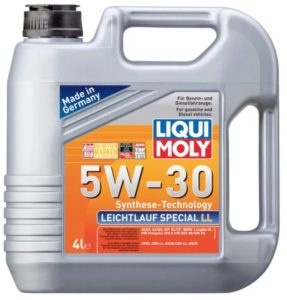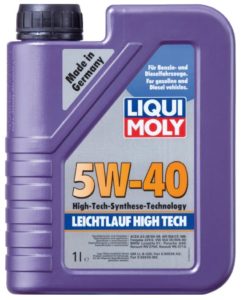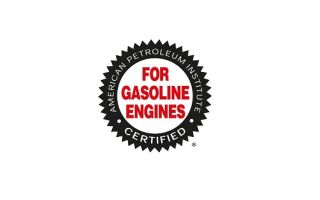Alongside with the classification of oil according to the SAE which characterizes oil viscosity, the API classification determines its applicability to a specific engine. In fact, what is the API? What other classifications are available? You can read here.
It is stipulated that SL-rated oil should be used for most modern gasoline engines provided the engine was produced before 2004 or SM-rated one if after 2004. Sometimes, if the engine model year is up to 2001, oil with specification SJ is permitted.
Oil guides say the following:
“SJ-rated oils are oils for engines produced in 1996-2001. They contain fewer environmentally harmful impurities than oils of category SH and they have energy-saving properties.
SL-rated oils are oils for engines made since 2001. Their detergent, antioxidant, antiwear and energy-saving properties have been considerably improved. They are characterized by low volatility and are compatible with exhaust gas neutralizers.
SM-rated oils are oils for engines manufactured since 2004. Oils of this category meet the increased requirements of the new-generation engine manufacturers. They can be used instead of SJ-rated and SL-rated oils”.


There is new SN oil, but little information is available concerning it for the time being. It is clear that today SN oils can be considered the best. They can also replace everything that has been produced before. That is, if the car shop manual recommends oil with specification SJ, then SN-rated oil will also do.
We have chosen the most popular and asked-for SL and SM oils and compared them.
So, what does ideal oil provide? Firstly, it should lubricate the parts as well as possible, and in all engine modes. So it should minimize the friction, increasing power and reducing fuel consumption. Secondly, it should minimize wear, extending the lifetime of the engine. Thirdly, it should serve as long as possible reducing the cost of replacing it. Fourthly, it should reduce environmental impact of the engine. The entire civilized world considers this issue to be very important.
It’s great to have a good “price-quality” ratio.
Oil Aging
There are several causes and factors of engine oil aging. Oil is a complex combination of hydrocarbon compounds, with different additives and admixtures called an additive package. The oil film remaining in the combustion chamber after the piston moves to the bottom dead point takes over all the power of the heat flow, which gradually changes the structure and composition of the oil. But only a small part of this film burns out. The rest, overheated, with the escaped light hydrocarbons, oxidized due to the access of oxygen at high temperature, is washed off into the engine pan. Only a little of this modified oil is formed during one cycle ‒ the thickness of the films is scanty, but there are a lot of such cycles. There is no such heating in bearings, maximum 180 degrees, but the pressures are very high, they can reach 30-40 MPa. It also leads to a change in the properties of the oil. In addition, in the oil pan it is in contact with the crankcase gases, hot and aggressive.
Oil should wash the engine, and it washes it, but the engine oil becomes saturated with contaminants, both mechanical and organic. Some of them will settle in the oil filter, but something will remain in the total volume of the oil. Besides, with time, detergent components are used up, but they are an important part of the engine oil additive package.
For modern synthetic oils the kilometrage life is claimed to be large ‒ 20 … 30 thousand kilometers.
Testing on an Aged Engine
The more oil is fed into the cylinders, the faster it ages. The thicker oil films on the walls of the cylinder are, the more oil undergoes a thermal effect during each cycle. Its volume in the crankcase is constantly decreasing because of the considerable burn-off loss. The increased pressure of crankcase gases and their higher temperature also increase the rate of oil oxidation. The dramatically increasing amount of combustion deposit in the old engine requires more detergent additives.
Therefore, it makes sense to accelerate testing of oil on an artificially aged engine. A special engine was assembled for testing, with standard bearing clearances and sharply increased ones in the cylinder-piston group.
SL, SM
Modern synthetic oils, the same according to the SAE, 5W40, have been selected for testing.
Now we will try to look for different oils according to the API classification. It would be correct if all of them were of the same brand, but from different groups in the API classification. Unfortunately, it is impossible ‒ oil of higher quality from any company just takes the place of the predecessor. Therefore, you have to choose from what is available. But, in order to increase the reliability of the results, two oils are included in each comparison group.
The first sample is Esso Ultron oil which is of quality class SJ/ SL. The second one is BP Visco 5000 oil. The French oil Motul X-Clean 8100 belongs to SM-class. It was paired with completely new Dutch oil ‒ NGN Gold.
After each test cycle the engines were dismantled, the parts were weighed and measured to determine the wear and fouling factor.
Then tests were run on a practically new, qualitatively run-in engine. It was assembled with due consideration of all the requirements for clearances. Standard test cycles were run successively first for all fresh oils, then for those “killed” by the service life cycle. Then the power, the fuel consumption, and the environmental parameters were measured.
The first test cycle (with fresh oils) detected no particular difference in how the engine responded to the group according to the API ‒ everything remained within measurement error.
The second cycle (with the used oils) arranged things in their proper place. The synthetic SL oils dramatically lowered their characteristics in comparison with the fresh samples, while Motul and NGN Gold oils lowered their characteristics to a much lesser extent. The difference between oils of different categories was already much more noticeable ‒ up to 6 … 7% in fuel consumption, up to 10% in toxicity, and up to 2 … 4% in power between the groups Esso-Visco and Motul-NGN. The engine responded to the aging of BP Visco oil more than to the others.
The working high-temperature kinematic viscosity of oils from different API groups changes in the following way. First there is a decrease; this is the destruction of thickening additives. Then it increases. It is a consequence of the decomposition and alteration of the base oil properties. The less this process is expressed, the greater the oil service life is.
What concerns viscosity, all the oils clearly correspond to the range prescribed by the SAE 5W40. The viscosity indexes are very high, which is characteristic of good synthetic oils (“viscosity index” is indirectly responsible for cold start of engines).
Look at the content of the active components. This is a direct characteristic of the additive package. Here it is evident that their concentrations in the given oils, both from the SL group and from the SM group, are very similar. Indeed, the absolute majority of manufacturers use practically the same additive packages and such manufacturers are few in the world. But the base for all oils is different.
Sulfur content. Sulfur compounds badly affect accelerators. They are always present in engine oil, as well as in anti-wear additives. Motul X-Clean oil was the leader ‒ it contained the least amount of sulfur, while in NGN Gold it was the greatest. But there are no regulatory restrictions as far as this characteristic is concerned. Experience shows that for most oils it is higher than 0.5 … 0.6%.
Base number. It is high enough in all oils, and it is a sign of washing ability. But in SM-rated oils, Motul X-Clean and NGN Gold, the base number is lower. A more stable base of SM oils requires a smaller quantity of detergent additives to maintain the required cleanliness of the engine, and excess alkali in the oil is harmful ‒ it increases corrosion activity and reduces the service life of additives.
The analysis of the data obtained from the used oils confirmed that, indeed, SM oils are more stable, which means that their service life is longer.
Let’s return to the data of engine tests. Everything is confirmed by “physical chemistry”. Indeed, Motul X-Clean and NGN Gold oils produced a greater energy-saving effect ‒ the engine, though a little, but became more efficient, a little more powerful, and this effect persists and even grows as the engine operates. But the main thing is that these oils produced substantially less deposit in the engine itself, in the oil pan, on the valve gear and on the pistons (which is the most important). The wear of the parts is also less. And again it is confirmed by “physical chemistry”.
Is It Worth Paying More?
So, let’s sum it up. Is it necessary to overpay for modern SM oils? If you have direct instructions for SM oils in the manual, the answer to this question is definitely YES. The other car owners have a choice.
Of course, SL-rated oils are also high-quality, but SM oils actually have certain advantages. These advantages are the best protection of the engine from wear, a lower level of combustion deposit in the engine and a longer service life.
It is difficult to say after what mileage it is necessary to change the oil of this or that rate. It is a highly individual characteristic that depends on the engine brand, its technical state, the quality of the fuel used, and on the driving style. But according to our rating good SM-rated oils are better than SL-rated oils by 30 … 40%.






